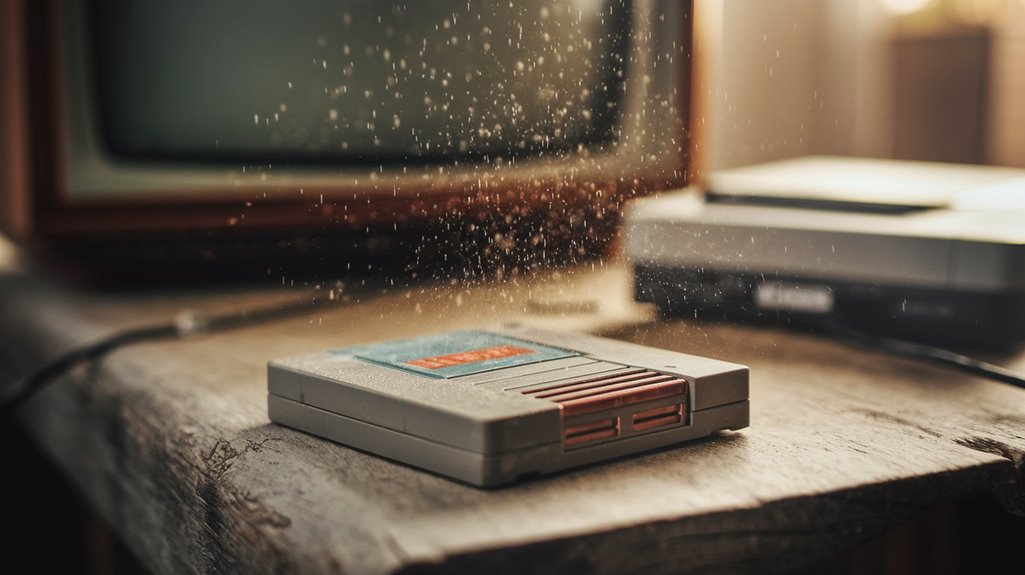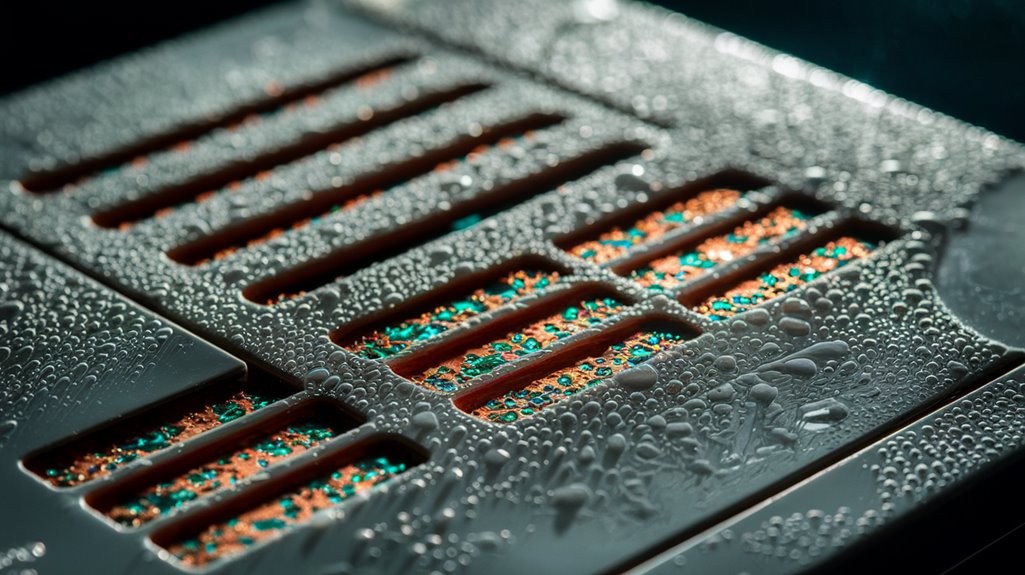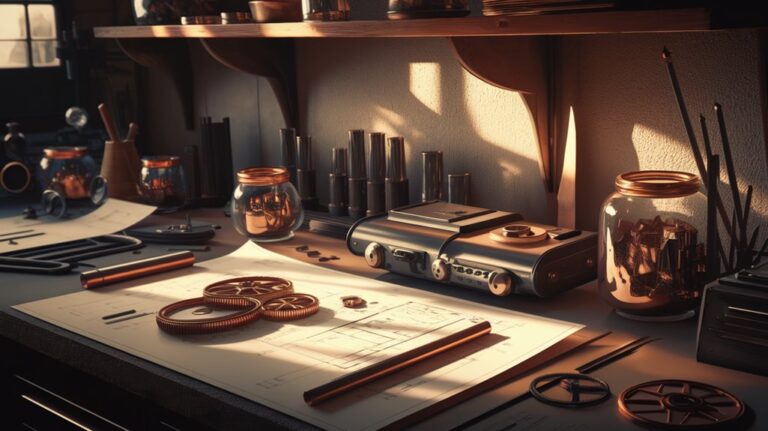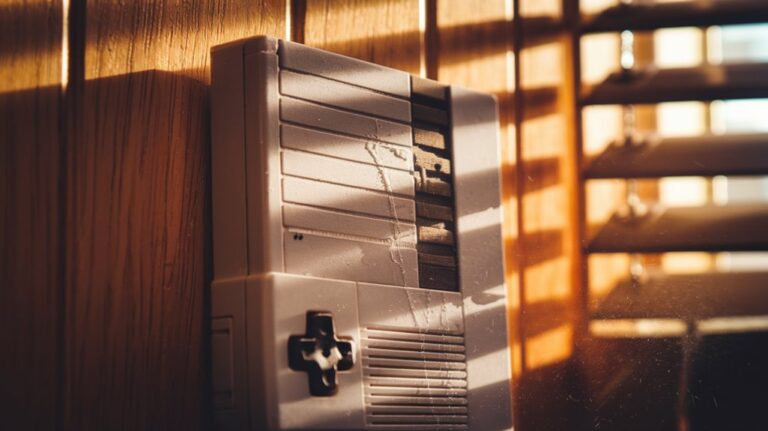Blowing Nintendo Cartridges: Why It Did More Harm
You've probably done it countless times – that familiar ritual of blowing into your Nintendo cartridge when games wouldn't load. Like millions of other gamers, you trusted this seemingly magical fix passed down through playground wisdom. But what if you've actually been damaging your beloved games all along? The truth about this widespread practice reveals a fascinating story of misconception, science, and unintended consequences that might make you think twice about your troubleshooting habits.
The Origins of a Gaming Misconception
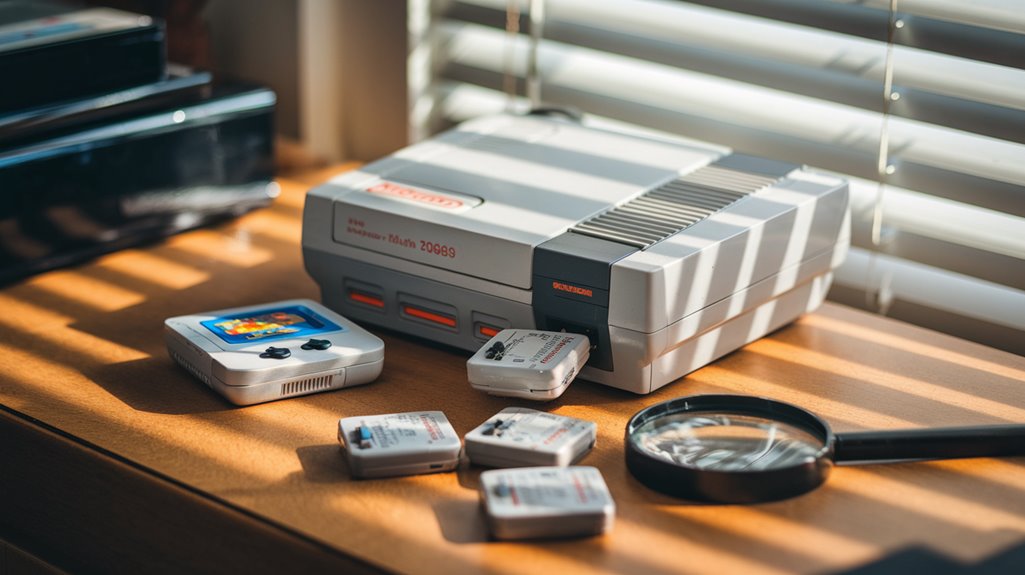
When gaming consoles first entered homes in the 1980s, a peculiar troubleshooting method spread like wildfire among Nintendo players.
You'd remove your game cartridge, blow into it vigorously, and reinsert it – a practice that quickly became gaming folklore despite Nintendo's warnings against it.
The widespread adoption of this cartridge maintenance technique wasn't based on scientific evidence but rather on a collective "hive-mind" phenomenon.
You probably experienced it yourself: when games wouldn't load, you'd instinctively reach for this solution because everyone else did it too.
While players blamed dust for their gaming woes, the real culprits were oxidation and worn-out connectors.
The gaming community perpetuated this myth through confirmation bias, remembering the times it seemed to work while forgetting the failures.
The 72-pin connector design made the Nintendo Entertainment System particularly susceptible to connection problems, leading many to resort to this ineffective solution.
Modern experts now recommend using isopropyl alcohol to properly clean cartridge connections instead of blowing.
Understanding the Real Technical Problems
Three main technical issues plagued the Nintendo Entertainment System's cartridge-based design.
First, the copper connectors on cartridges would naturally tarnish when exposed to air, compromising the electrical connection.
Second, the console's pins would gradually lose their springiness, making it harder to maintain firm contact with the game cartridge.
Third, the overall connector system was mechanically flawed, wearing out faster than intended.
The console's advanced copper wire technology, similar to what was later used in other Nintendo systems, made it especially sensitive to connection issues.
Proper cartridge maintenance became essential as these issues compounded over time. Simply removing and reseating cartridges would often fix connection problems.
What you didn't realize was that blowing into cartridges only made things worse by introducing moisture, leading to connector corrosion.
While you might've experienced temporary success from blowing into cartridges, you were actually accelerating their deterioration through oxidation and potential mold growth.
That's why Nintendo strongly advised against this common practice.
The Science Behind the Damage
Although blowing into Nintendo cartridges seemed like a logical solution at the time, the science behind this practice reveals why it caused significant damage. The chemical reactions triggered by your breath wreaked havoc on those golden contacts in ways you couldn't see.
When you blow into a cartridge, you're exposing it to:
- Moisture-laden breath that initiates oxidation and corrosion
- Bacteria and organic matter that promote mold growth
- Saliva particles that alter electrical conductivity
The moisture effects are particularly destructive, as they don't just disappear after you stop blowing. Instead, they linger and interact with environmental factors, accelerating the deterioration of the metal contacts. A 30-day experiment with two identical Gyromite cartridges showed that the blown-into test cartridge developed visible mold and bacterial growth. The real issue was usually the 72 pin connectors becoming misaligned, not dust accumulation.
Over time, these chemical reactions transform those shiny connectors into unreliable, corroded surfaces that struggle to maintain proper electrical connections with your console.
What Expert Research Reveals
Scientific research has debunked the long-held belief that blowing into Nintendo cartridges fixed gaming issues. Studies, including one by Frankie Viturello, demonstrate how this common cartridge maintenance practice actually causes harm.
By exposing one cartridge to regular blowing while leaving another untouched, researchers observed significant degradation in the blown cartridge's contacts.
Gaming myths like this persisted because players mistook the act of removing and reinserting the cartridge as proof that blowing worked. The ZIF cartridge design often caused connection problems that simply needed readjustment.
In reality, experts like Vince Clemente confirm that moisture from human breath introduces corrosive elements, leading to rust and potential mold growth.
While the moisture might temporarily increase conductivity, it ultimately damages your games.
You'll protect your Nintendo cartridges better by using proper cleaning methods with isopropyl alcohol and appropriate tools.
Better Ways to Care for Your Cartridges
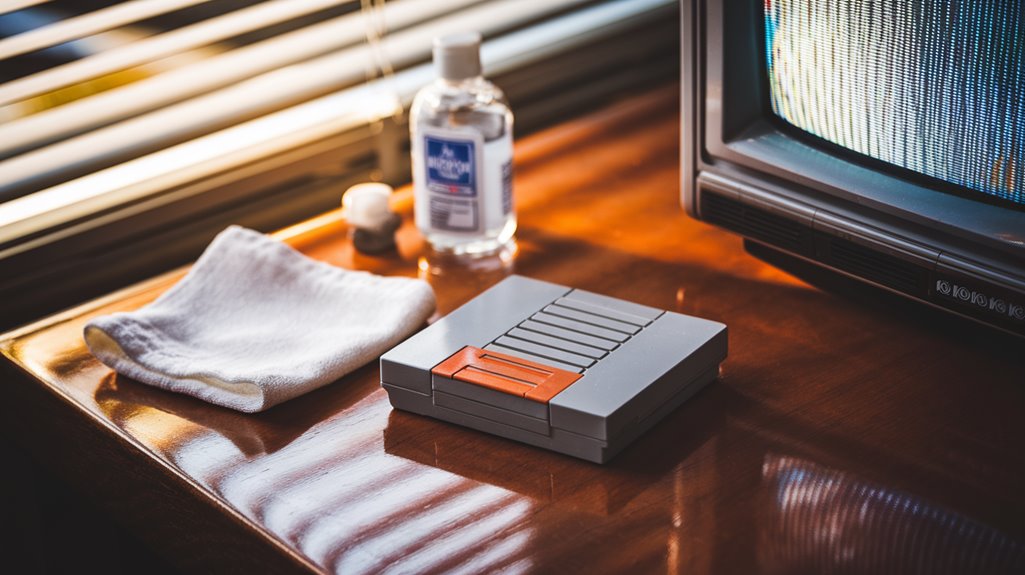
Maintaining your Nintendo cartridges properly requires the right tools and techniques for safe, effective cleaning. Instead of blowing into cartridges, focus on proven cleaning techniques using isopropyl alcohol and cotton swabs to clean the metal contacts. The gold/copper strips inside make direct contact with your console to transmit game data. A hair dryer on medium heat can help remove stubborn store stickers without damaging the cartridge label.

